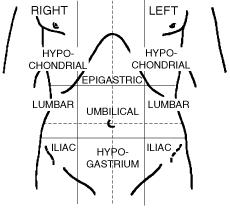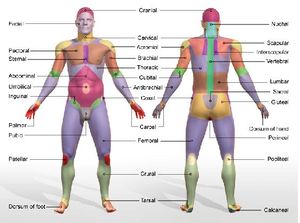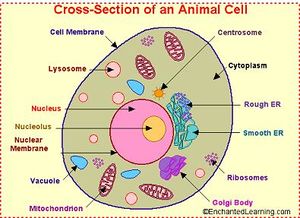Anatomy and Physiology
| Anatomy and Physiology | ||||||||||||||||
|---|---|---|---|---|---|---|---|---|---|---|---|---|---|---|---|---|
| Type | Life Science | |||||||||||||||
| Category | Study | |||||||||||||||
| Description | Participants will be assessed on their understanding of the anatomy and physiology for the human Nervous, Sense Organs, and Endocrine systems. | |||||||||||||||
| Event Information | ||||||||||||||||
| Participants | 2 | |||||||||||||||
| Approx. Time | 50 Minutes | |||||||||||||||
| Impound | No | |||||||||||||||
| Allowed Resources |
| |||||||||||||||
| Rotates | No, only systems rotate | |||||||||||||||
| Eye Protection | None | |||||||||||||||
| First Appearance | 1984 | |||||||||||||||
| Latest Appearance | 2023 | |||||||||||||||
| Forum Threads | ||||||||||||||||
| ||||||||||||||||
| Question Marathon Threads | ||||||||||||||||
| ||||||||||||||||
| Additional Resources | ||||||||||||||||
| Test Exchange | Link | |||||||||||||||
| Official Resources | ||||||||||||||||
| Division B Website | www | |||||||||||||||
| Division C Website | www | |||||||||||||||
| Division B Results | ||||||||||||||||
| ||||||||||||||||
| Division C Results | ||||||||||||||||
| ||||||||||||||||
Anatomy and Physiology (previously known as A is for Anatomy (1988-1993) and Anatomy (2007-2015) in Division B) is an event which tests students' knowledge about the anatomy and physiology of various systems in the human body. Division B and Division C will both typically concentrate on three systems, which change each year. Specific topics about each system vary by test difficulty, although can include content ranging from the cellular to holistic level. Questions about diseases or treatment of a specific system can be asked as well.
The event is run over 50 minutes and students are commonly assessed through questions given at stations or test packets. The winner of the event is commonly determined by the team with the most questions correct over the entire test. Teams are allowed to bring writing utensils, two non-programmable calculators, and one double-sided page of notes containing information in any form from any source. Due to only being granted one piece of paper, the "cheat sheet" is commonly laminated and filled with content at a very small size, in order to maximize usage.
The event is an integral event to Science Olympiad, having always been an event in recent years with no rotation. The event first appeared in 1984, before Science Olympiad was formally established and was an event at the first national tournament.
Body Systems by Year
Prior to 2015, Anatomy and Physiology was called "Anatomy" in Division B and contained two systems that alternately rotated out every two years, while the Division C version was called "Anatomy and Physiology," with a third system that rotated every two years. In 2015, both events had the same topics and "Anatomy" in Division B was renamed to "Anatomy and Physiology." In 2016 a new rotation system was developed, with all three events rotating out every year, and rotating back in after four years.
Event Format
When the event is run in stations, with usually about 10-20 stations, there will be sections in the test corresponding to each of the stations with questions (the format can vary widely from test to test). Students typically have a time limit at stations (e.g. 5 minutes per station, then rotate).
Students must note that in the events there is a strong possibility that a model would be used. For example, the event writer could use a model of the entire body or a specific organ to base questions off of. To do well on an identification station like this, make sure you know your labeling, and be prepared to find numbers on the model quickly.
The event may also be run with PowerPoints, where students are given a time limit to look at a PowerPoint slide and answer the question/questions on that slide.
The test may include general information problems, diagrams to label, or calculations. If there are stations, there may be no questions/diagrams in the packet, so all work must be done at the corresponding station. Spelling usually will count. Points may also be taken away if the packet is not neat or legible.
General Anatomy and Physiology
- This section covers general topics of anatomy and physiology that are applicable to most or all body systems. For information on the specific systems for each year, see Body Systems by Year.
Structural Levels of Organization
The human body can be broken up into six structural levels.
- Chemical: atoms and molecules
- Cell: the functional units of the body, made up of chemicals
- Tissue: a group of similar cells, four types: epithelial, connective, muscle, nervous
- Organ: two or more types of tissue that together perform a function
- Organ System: a group of organs that considered a unit because of a common set of functions
- Organism: a whole being that can function and live on its own
Describing Location
A list of location descriptors commonly used in anatomy.
- Superior/Rostral: up, above
- Inferior/Caudal: down, below
- Anterior/Ventral: front
- Posterior/Dorsal: back
- Proximal: near, nearest to point of attachment
- Distal: far, farthest to point of attachment
- Medial: towards the middle
- Lateral: away from middle, to the side
- Superficial: near the surface
- Deep: towards the interior of the body
- Ipsilateral: same side of the median, used when describing two parts in relation to each other
- Contralateral: opposite side of the median, used when describing two parts in relation to each other
Body Regions
Cells
Your body is made up of trillions of cells. Cells are the tiniest functional part of any living organism. They are made up of elements, and so are much larger than atoms. Cells have organelles, which carry out important jobs inside the cell. Each type of cell has different functions.
The cell membrane contains the contents of the cell, kind of like a plastic bag. It lets some things go in and out through the processes of active and passive transport. One form of passive transport is known as diffusion. Diffusion is when particles of high concentration move to areas of low concentration. This can be seen when you spray air freshener in a room. The scent does not only stay where you sprayed it, it spreads out around the room.
Just like the brain is the main command center for the body, the nucleus is the main command center of the cell. It stores DNA, which is used when a cell multiplies (mitosis).
Organelles in the Human Body
- The mitochondria are the powerhouse of the cell. They make most of the cell's energy needed to perform tasks. The process of making cellular energy is known as cellular respiration.
- Vesicles transport substances throughout the cells.
- Ribosomes are involved in protein synthesis or the making of protein. They are either located bound to the rough endoplasmic reticulum or freely-floating in the cytosol.
- Lysosomes break down material that is no longer in use. The material can then be recycled into other things.
- Vacuoles store substances in the cell. They are bigger than vesicles.
- The Golgi apparatus is the cell's UPS. It is involved in shipping and receiving substances.
- Microtubules provide structural support and make up part of the cytoskeleton, as well as being part of cilia and flagella.
- Centrosomes serve as the microtubule organizing center of the cell. There is only one in each animal cell consisting of two centrioles.
Types of Cells
There are more than 200 different types of cells in the human body. However, they can be grouped into a few simple categories. Here are just a few.
- Nerve Cells, or neurons, are located throughout the brain. They help us with the five senses (taste, touch, smell, sight, sound), memory, and autonomous activities like breathing.
- Muscle Cells help move the body. Check the Muscular System page for more information on muscle cells.
- Epithelial Cells help protect the body and provide a covering.
- Glandular Cells secrete helpful chemicals into various parts of the body. One example is the type of cell located in the armpits to secrete sweat, which relieves the body of harmful chemicals.
Epithelium
Epithelial tissue is found throughout the body. It covers both internal and external surfaces, as well as forming most glands. Its major purposes are protecting structures, acting as barriers, permitting the passage of substances through diffusion, secreting enzymes or mucous, and absorbing substances. Epithelium is classified by the number of cell layers and the shape of the epithelial cells.
- Cell Layers
- Simple: one layer
- Stratified: more than one layer
- Pseudostratified: appearing to be stratified, but actually simple
- Shape
- Cuboidal: cube-like
- Columnar: column-like (tall and thin)
- Squamous: flat
- Common Examples of Epithelium
- Simple Squamous: lung alveoli, the site of gas exchange
- Simple Cuboidal: kidneys
- Simple Columnar: stomach and intestines, secrete and absorbs
- Pseudostratified Columnar: nasal cavity, sinuses, pharynx, trachea
- Stratified Squamous: skin
Tips for the event
- Make a binder! Even though binders are not allowed during competition, it remains a great way to store, organize and memorize all information for the event. The binder should include information on all topics mentioned in the rule book.
- Flashcards can be a useful resource for studying any of the human body systems. They can also be a great reference sheet/table. Put pictures of parts of the system, their name or their function on the cards. Flashcards can be made online through quizlet.com and using Anki.
- Remember the charts and diagrams. They often account for a majority of the questions on the test. Simple diagrams often help with studying more than the complicated ones do.
- Study as much about the systems as possible, even if the rules don't specifically mention it: "Better safe than sorry."
- Find time to review the notes every day, for example before bed or after waking up. Small amounts of studying really add up.
- Take multiple practice tests, because the type of questions and level of complexity can vary widely from test to test.
- When recording answers, make sure to record them on the right page/section/question.
- A model would often be used for questions about labeling a system. Be sure to study the location of each part of the system.
- Many anatomical systems overlap, so it may be beneficial to at least glance over topics from previous rotations, especially if you are repeatedly running into questions that relate to other systems.
- For example, any system that has to do with muscles (Muscular, Cardiovascular) requires knowledge of the action potential, which is connected to the Nervous System.
- Try to find examples of your study in real life. This deeper, higher level of thinking will help you in tests. Tests will most likely tie in real-life events into questions, instead of questioning you the straight facts.
- For example, when you raise a glass of water to your mouth, notice that the prime mover is the brachialis muscle.
Making the Note Sheet
- Source-check before doing anything. Putting incorrect information on the notes can be devastating.
- Color code the information by system or subdivision of a system. This makes finding information easier during competition. Also color-code diagrams for maximum efficiency (as seen in the picture below). Keep the coding consistent so that by the end of the season you automatically associate a color to a type of information (ex: pink = muscles; blue = respiratory; green = endocrine and etc.)
- Make sure the partner is also familiar with the note sheet, for better cooperation during the competition.
- Make your own diagrams, either by hand or with an image editor, such as GIMP for Mac/Linux, Paint for Windows, and Adobe Photoshop. The example below was made by aubrey048.
- Use as small of a font as possible, but keep it readable. There's no point in having volumes of information if it cannot be interpreted. Serif fonts are considered easier to read in print than sans-serif fonts.
- Type the sheet, then hand-write extra notes in the margins where the printer might not be able to print. Pencils are easier to erase, while pens do not smudge. A two-sided page can fit a lot of information.
- Use laser printers to improve the readability of the notes when the font is very small.
- Prioritize information to put on. Include the information you have the most trouble remembering first, then add additional information.
- Include charts, like the Hormones and Muscle Lists. The act of making a chart can also be greatly beneficial.
- Include diagrams often to maximize your note sheet. Try to find ones with big font, so you can minimize it while keeping the text readable. Colored diagrams are generally easier to use. Overall diagrams are very useful, as are ones that specify in a particular function/part.
- Include formulae. Some tests will have calculations about the dead space in lungs, lung volume, blood pressure, and other anatomical formulae.
- For the respiratory system, consider listing the steps of gas exchange because this type of problem has been very common. Similarly, for the digestive system, consider including the route food goes through from the mouth to the large intestine.
Practice Material
The official Science Olympiad event page for Division B and Division C contain practice materials. See the Test Exchange for Anatomy & Physiology tests, and the Quizzing page for some additional practice.
Below are some additional exercises:
Additional Exercises
1. If people were injected with ghrelin, we would expect that they would ______.
2. Describe the three types of hormones and provide examples of each. 3. What is the location for the receptor for water-soluble hormones? What is the location for the receptor for fat-soluble hormones? Why is there a difference in the location of the two receptors? 4. What is a goiter? How can it be prevented? 5. What is the difference between an endocrine gland and an exocrine gland? 6. What is the effect of hyposecretion of estradiol?
1. List the location, origin and insertion of the latissimus dorsi, rectus abdominis, and gastrocnemius. 2. How does exercise affect the muscular system? 3. List the steps of muscle contraction in order.
1. Describe the function of the respiratory system. 2. What is a potential cause of emphysema? 3. List the steps of gas exchange in order.
1. Describe poliomyelitus and list the different types and respective treatments.
1. Which of these is not a part of the small intestine?
2. Which of these is not a salivary gland?
3. What does gastric juice do? 4. What is the difference between mechanical digestion and chemical digestion? Give and example of each. 5. What is the function of the liver in the digestive system? 6. Name the parts of the large intestine. 7. What is the appendix? What is its role?
1. What are the functions of the excretory system as a whole? 2. What is urea?
1. What are the five layers of the epidermis? 2. Name the four types of mechanoreceptors. 3. How might one treat athlete's foot?
1. What main blood vessels connect to the right atrium? 2. What is the interventricular septum? 3. a. Why doesn't oxygen simply diffuse through the body? b. How does hemoglobin bind to oxygen?
|
Useful Resources
- The official site of the Anatomy event
- User gotnojams' Notes, from SSSS 2017.
- Whopper's Anatomy Notes
- File:2011 ANATOMY 8-10.ppt
External Links
- Disease information
- US National Library of Medicine and the National Institutes of Health
- The national institute of drug abuse
- The text and some images from Gray's Anatomy
- Detailed, interactive diagrams on parts of the systems
- National Heart, Lung, and Blood Institute
- More disease information
- Gives simple, printable diagrams
- Challenging, interactive flash games that test your knowledge of general anatomy.
- Animations for many systems
- National Academy of Neurology








